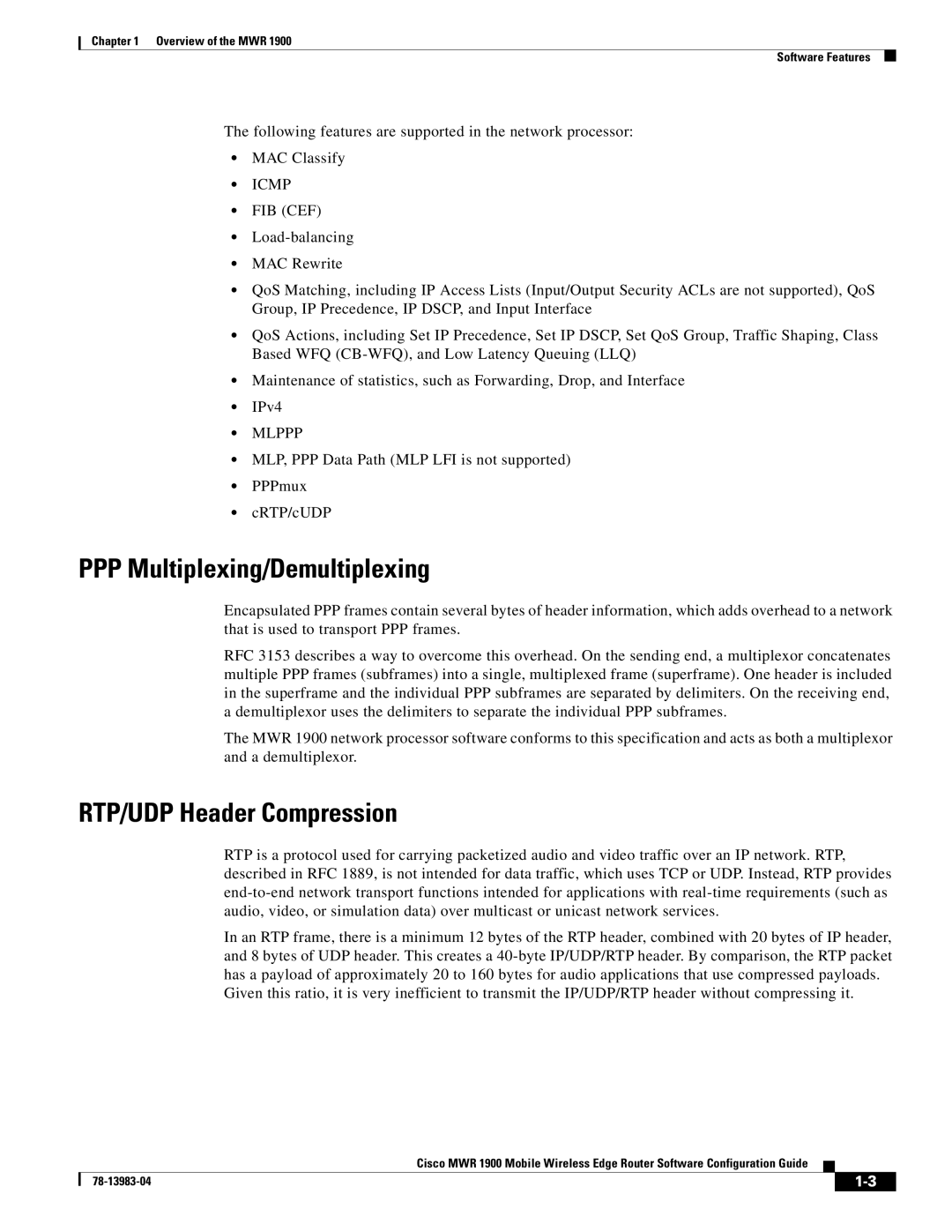
Chapter 1 Overview of the MWR 1900
Software Features
The following features are supported in the network processor:
•MAC Classify
•ICMP
•FIB (CEF)
•
•MAC Rewrite
•QoS Matching, including IP Access Lists (Input/Output Security ACLs are not supported), QoS Group, IP Precedence, IP DSCP, and Input Interface
•QoS Actions, including Set IP Precedence, Set IP DSCP, Set QoS Group, Traffic Shaping, Class Based WFQ
•Maintenance of statistics, such as Forwarding, Drop, and Interface
•IPv4
•MLPPP
•MLP, PPP Data Path (MLP LFI is not supported)
•PPPmux
•cRTP/cUDP
PPPMultiplexing/Demultiplexing
Encapsulated PPP frames contain several bytes of header information, which adds overhead to a network that is used to transport PPP frames.
RFC 3153 describes a way to overcome this overhead. On the sending end, a multiplexor concatenates multiple PPP frames (subframes) into a single, multiplexed frame (superframe). One header is included in the superframe and the individual PPP subframes are separated by delimiters. On the receiving end, a demultiplexor uses the delimiters to separate the individual PPP subframes.
The MWR 1900 network processor software conforms to this specification and acts as both a multiplexor and a demultiplexor.
RTP/UDP Header Compression
RTP is a protocol used for carrying packetized audio and video traffic over an IP network. RTP, described in RFC 1889, is not intended for data traffic, which uses TCP or UDP. Instead, RTP provides
In an RTP frame, there is a minimum 12 bytes of the RTP header, combined with 20 bytes of IP header, and 8 bytes of UDP header. This creates a
Given this ratio, it is very inefficient to transmit the IP/UDP/RTP header without compressing it.
Cisco MWR 1900 Mobile Wireless Edge Router Software Configuration Guide
|
| ||
|
|
